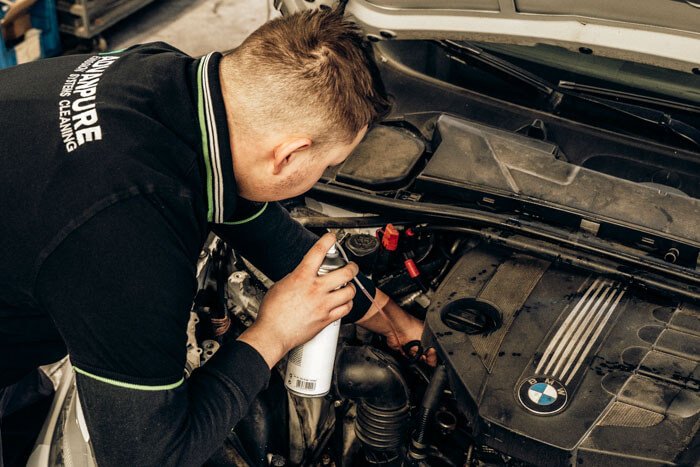Contemporary diesel engines have components called Diesel Particulate Filters or DPFs that should confine soot and other particulates and decrease dangerous emissions. These filters, in time, become filled with captured soot and may then reduce fuel consumption, efficiency and potentially lead to costly repairs. To guarantee optimum engine performance and adherence to ecological standards, routine Exhaust DPF Cleaning and maintenance are essential. There exist multiple methods for cleaning DPFs, featuring differing levels of efficiency. This post will discuss the best ways to clean the DPF, their advantages, and just how they prolong the life of the filter & the engine.
Inert Regeneration
The procedure of passive regeneration is triggered by exhausted temperature reaching the required level to burn the collected soot in the DPF. It mostly occurs while touring at a high velocity on the highway, and only the exhaust temperature rises to the optimum level, around 600oc(1100/2)F. Soot is transformed into carbon dioxide throughout passive regeneration as well as released through the exhaust system. The fact that passive regeneration doesn’t require extra equipment or outside involvement is one of its benefits.
It is an economical solution because it occurs organically during vehicle operation. Nevertheless, this approach has drawbacks, particularly for cars that are used in cities or for short distances and whose engines cannot attain the necessary temperature. In these situations, soot builds up in the DPF and, if other measures are not taken, the filter could clog.
Dynamic Rejuvenation
Whenever the amount of soot in the filter hits a specific threshold, the vehicle’s onboard computer initiates active regeneration, providing a more methodical and regulated way of cleansing the DPF. By adding more fuel to the engine’s combustion chamber or the exhaust system right away the engine management system elevates the exhaust temperature during this operation. The soot particles that are caught in the filter are burned off as a result of this temperature rise.
Active regeneration is a useful method, particularly for cars that don’t consistently reach high exhaust temperatures while driving in daily traffic. But there are certain disadvantages. The extra gasoline consumed in the procedure might lead to a little reduction in fuel economy, and in the event the soot accumulation is particularly severe, the procedure could need to be repeated. Furthermore, if active regeneration is done often enough, it may limit the DPF’s lifespan because it might be harsh on it. However, in situations where passive regeneration isn’t sufficient, it is a helpful way to keep the filter operating as intended.
Effective Techniques for DPF Cleaning
When it comes to DPF cleaning, several techniques stand out as highly effective. One of the most popular methods is forced regeneration, which involves heating the DPF to burn off accumulated soot. Another efficient technique is air pressure cleaning, where compressed air is used to remove trapped particles. Another is the ultrasonic cleaning which is also on the increase, employs high frequency sound waves to help knock off soot and ash on the filter. Besides, chemical machines entail usage of more specific cleaning materials in that they dissolve the accumulation. There are benefits with each, but which is the most effective depends with the state of the DPF and the level of the blockage, for effectiveness, durability and less emission.
Induced Regeneration
Forced regeneration is required whenever passive and active regeneration techniques are insufficient to remove the soot formation in the DPF. Using a diagnostic tool or specialised machine, this procedure connects the car to burn off accumulated soot and causes the DPF to regenerate by raising the exhaust temperature. It is done by a technician in a workshop & is frequently the last option preceding more intrusive cleaning or filter replacement. Although it has hazards, forced regeneration is successful at clearing seriously blocked DPFs.
If the high temperatures engaged are not watched, the filter may be damaged. The procedure can also take a while, and it might mean taking the car out of commission for a few hours. Forced regeneration is still among the most effective ways to remove tough soot obstructions and boost filter effectiveness despite these difficulties.
Baking, or Thermal Cleaning
The technique commonly referred to as “baking,” or “thermal cleaning,” is mostly applied to off-vehicle DPF cleaning. During this procedure, the vehicle’s DPF is taken out and heated to temperatures above 600°C in an industrial oven. The soot & ash contained in the filter are broken down by the intense heat into a fine powder that may be vacuumed or compressed air-cleaned later. Ash won’t be burned off by regeneration alone, thus thermal cleaning is an efficient means to remove both soot and ash.
This method works well for filters which have gathered a large volume of non-flammable material over time. However because expert handling and specialised equipment are required, the procedure might turn out costly. Additionally, it necessitates removing the DPF from the car, which will take some time. Thermal cleaning, however, is a very dependable technique for prolonging a DPF’s life & regaining its usefulness.
Cleaning using Ultrasonic
Another off-vehicle method more well-liked is ultrasonic cleaning, which is good at cleaning DPFs. During this procedure, the DPF is immersed in a cleaning solution bath then ultrasonic vibrations are utilised to produce tiny bubbles which explode into high-energy particles. This energy assists in removing ash, soot, and other impurities from the filter without causing structural damage. Ash can only be removed by ultrasonic cleaning; thermal or regenerative methods are insufficient to remove it. It also has the benefit of being easy on the filter, which lowers the possibility of damage which can arise with harsher cleaning techniques.
Final Words
The degree of soot and ash, the kind of car, and the driving environment all affect how successful DPF cleaning methods are. While passive regeneration is perfect for long-distance driving, it could not be effective enough for cars driven in cities. While forced regeneration & active regeneration are dependable techniques for removing intermediate to severe soot blockages, they may harm fuel economy & filter life. The most complete cleaning is achieved with off-vehicle cleaning techniques like thermal and ultrasonic cleaning, especially for filters that have a large amount of ash buildup.







